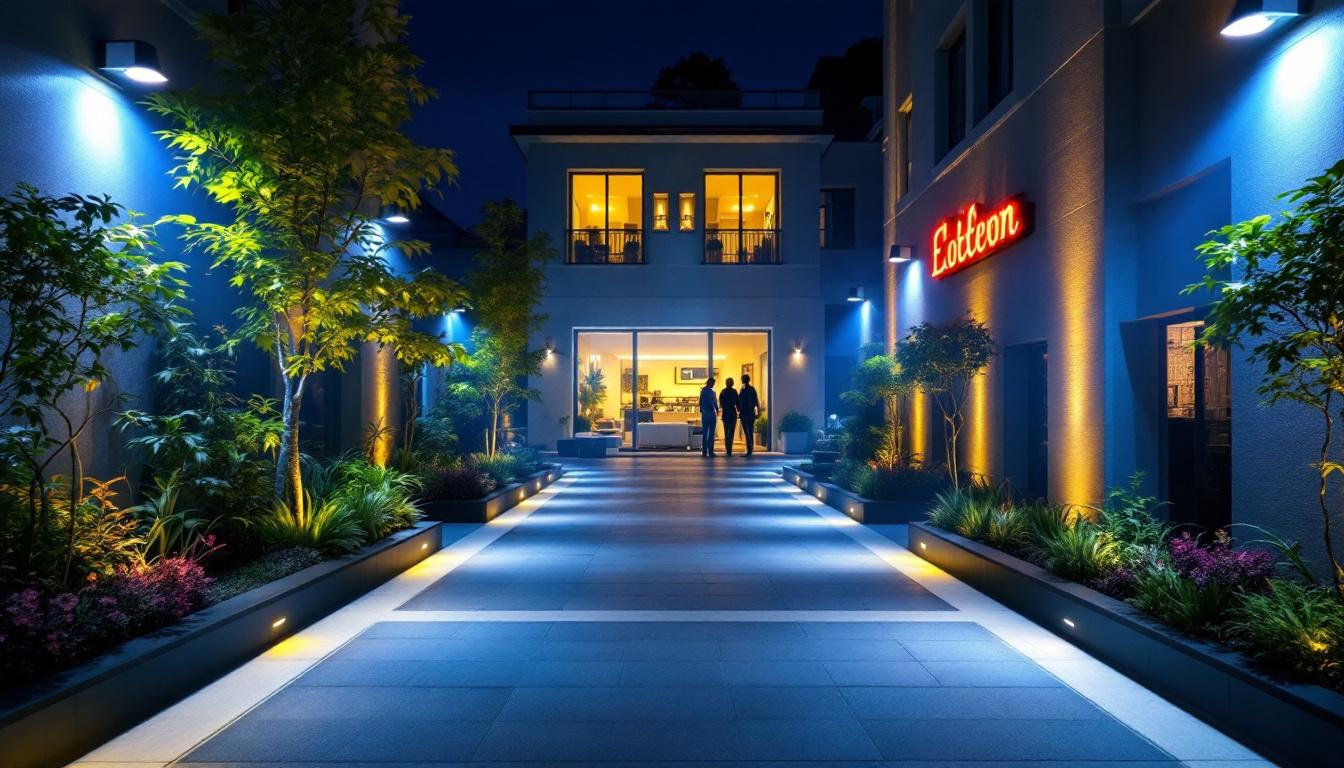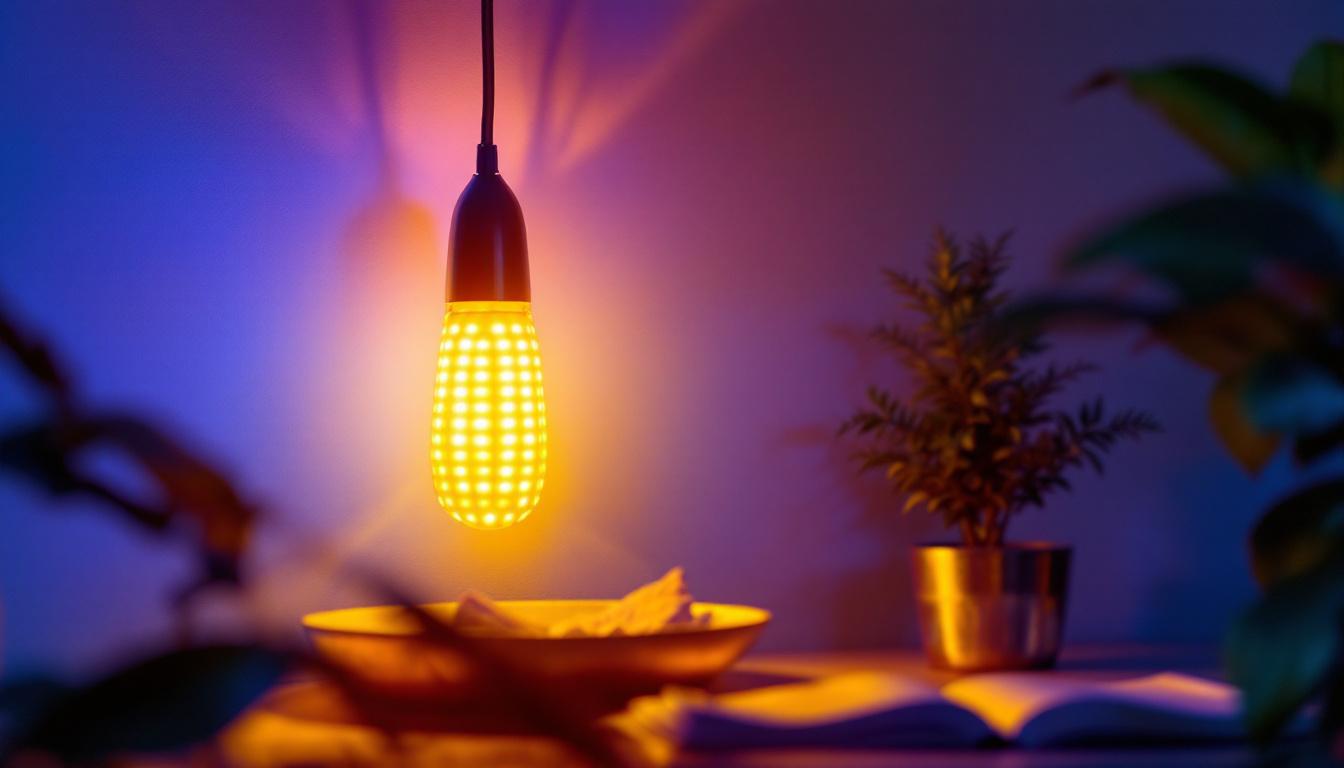
Outdoor LED flood lights have become a staple in modern lighting design, offering energy efficiency and versatility for a variety of applications. They are particularly favored in commercial and residential settings for illuminating large areas, enhancing security, and creating ambiance. However, despite their popularity, there are several critical aspects that lighting contractors often overlook when specifying and installing these fixtures.
This article aims to shed light on these often-missed considerations, ensuring that lighting contractors can deliver optimal results for their clients. From understanding the nuances of LED technology to considering environmental factors, each point will help enhance the effectiveness of outdoor lighting projects.
One of the key advantages of LED flood lights is their long lifespan, which can often exceed 50,000 hours compared to traditional incandescent or halogen lights. This durability not only reduces the frequency of replacements but also minimizes maintenance costs over time. Additionally, LED technology allows for a variety of color temperatures, enabling contractors to select the perfect hue to complement the surrounding environment, whether it be a warm white for a cozy backyard or a cooler tone for a more modern commercial space. The ability to adjust color temperature can significantly impact the mood and functionality of outdoor areas, making it an essential consideration in the design process.
Furthermore, the placement and angle of LED flood lights are crucial for achieving the desired lighting effect while avoiding common pitfalls such as light pollution and glare. Properly positioned fixtures can enhance visibility and safety without overwhelming the surrounding area with excessive brightness. Lighting contractors should also take into account the specific needs of the environment, such as the presence of trees, buildings, or other obstacles that may obstruct light distribution. By conducting a thorough site analysis and utilizing tools like photometric studies, contractors can ensure that their lighting design not only meets aesthetic goals but also adheres to local regulations regarding outdoor lighting, thereby promoting a harmonious balance between functionality and environmental responsibility.
One of the most significant factors in selecting outdoor LED flood lights is color temperature, which is measured in Kelvin (K). Many contractors default to a specific color temperature without considering the specific needs of the environment. Cooler color temperatures (5000K and above) provide a bright, daylight-like appearance, which can be ideal for security and visibility. However, warmer temperatures (3000K to 4000K) can create a more inviting atmosphere, particularly in residential areas.
Choosing the appropriate color temperature can significantly affect the perception of safety and comfort in outdoor spaces. For instance, a warm white light may be more suitable for a garden or patio, while a cooler light might be better for parking lots or commercial properties. Understanding the psychological effects of different color temperatures can lead to more effective lighting solutions and increased client satisfaction.
Another common oversight is the relationship between wattage and lumens. While many contractors may focus primarily on wattage as a measure of brightness, lumens are the more accurate metric for evaluating the light output of LED fixtures. LED technology allows for lower wattage to produce higher lumens, which can lead to misconceptions about the required power for a given application.
Contractors should educate themselves on the specific lumen output required for different outdoor spaces. For example, a residential backyard may require around 300 to 700 lumens per fixture, while commercial areas may need significantly more. By focusing on lumens rather than wattage, contractors can provide more energy-efficient solutions that still meet the necessary brightness requirements.
Outdoor flood lights must withstand various weather conditions, making durability a crucial factor in selection. Many contractors may overlook the importance of weather resistance ratings, such as IP (Ingress Protection) ratings, which indicate how well a fixture can resist dust and moisture. A fixture with a higher IP rating is better suited for harsh environments, ensuring longevity and reducing maintenance costs.
In addition to IP ratings, the materials used in the construction of flood lights can significantly impact their performance and lifespan. Fixtures made from corrosion-resistant materials, such as aluminum or stainless steel, are preferable for coastal areas where salt air can accelerate deterioration. Understanding the specific environmental challenges of a project can guide contractors in selecting the most appropriate fixtures.
Light pollution is an increasingly important consideration in outdoor lighting design. Many municipalities have regulations in place to limit light trespass and glare, particularly in residential areas or near natural habitats. Contractors must familiarize themselves with these regulations to ensure compliance and avoid potential fines or project delays.
Moreover, using fixtures designed to minimize light pollution, such as full cutoff flood lights, can enhance the overall quality of the lighting design. These fixtures direct light downward, reducing glare and preventing light from spilling into unwanted areas. By prioritizing compliance and environmental responsibility, contractors can contribute to more sustainable lighting solutions.
The placement and angling of outdoor flood lights are critical to achieving optimal performance. Many contractors may install fixtures without considering the specific lighting needs of the area, leading to uneven illumination or excessive glare. It is essential to assess the space and strategically position fixtures to provide uniform lighting while minimizing shadows and dark spots.
Additionally, the angle at which flood lights are mounted can significantly impact their effectiveness. Aiming fixtures too high can create excessive glare, while positioning them too low may not provide adequate coverage. Contractors should take the time to test different angles during installation to ensure the best results for their clients.
Electrical considerations are another area where contractors can overlook important details. Proper wiring and circuit planning are essential for ensuring the safety and efficiency of outdoor lighting systems. Contractors should ensure that the wiring is rated for outdoor use and that it can handle the load of the installed fixtures.
Furthermore, incorporating features such as timers, dimmers, or smart controls can enhance the functionality of outdoor lighting systems. These features allow for greater control over light levels and can contribute to energy savings. By considering the electrical infrastructure during the planning phase, contractors can create more efficient and user-friendly lighting solutions.
While LED technology is inherently more energy-efficient than traditional lighting options, contractors should still consider the overall energy consumption of their designs. This includes not only the wattage of the fixtures but also the total number of fixtures and their usage patterns. By conducting an energy audit, contractors can identify opportunities for further efficiency improvements.
In addition, educating clients about the long-term cost savings associated with LED lighting can enhance the value of the installation. Highlighting the reduced energy bills and lower maintenance costs can help clients appreciate the benefits of investing in high-quality outdoor LED flood lights.
As sustainability becomes a priority for many clients, contractors should consider incorporating renewable energy sources into their outdoor lighting designs. Solar-powered LED flood lights are an excellent option for areas where extending electrical infrastructure may be challenging or costly. These fixtures harness solar energy during the day and provide illumination at night, reducing reliance on grid power.
Contractors should stay informed about advancements in solar technology and battery storage solutions to provide clients with the best options available. By promoting sustainable practices, contractors can differentiate themselves in a competitive market and appeal to environmentally conscious consumers.
Clear communication with clients is vital throughout the lighting design and installation process. Many clients may have unrealistic expectations regarding the performance of outdoor flood lights, particularly in terms of brightness and coverage. Contractors should take the time to explain the capabilities and limitations of LED technology, ensuring clients understand what to expect from their lighting systems.
Providing visual aids, such as diagrams or renderings, can help clients visualize the final outcome and make informed decisions. By setting realistic expectations, contractors can foster trust and satisfaction, leading to positive referrals and repeat business.
After installation, many clients may overlook the importance of ongoing maintenance for their outdoor lighting systems. Contractors should provide clients with clear guidelines on how to care for their fixtures, including regular cleaning and inspections. This proactive approach can help extend the lifespan of the lights and maintain their performance over time.
Additionally, contractors can offer maintenance services or packages to ensure that clients receive ongoing support. By positioning themselves as knowledgeable partners in the care of outdoor lighting systems, contractors can enhance their relationships with clients and create opportunities for future work.
Outdoor LED flood lights offer numerous benefits, but lighting contractors must be diligent in their approach to ensure optimal performance and client satisfaction. By understanding LED technology, considering environmental factors, adhering to installation best practices, and prioritizing client education, contractors can elevate their outdoor lighting projects.
Ultimately, attention to detail and a commitment to excellence will set successful contractors apart in a competitive industry. By addressing the common oversights discussed in this article, lighting contractors can create effective, sustainable, and aesthetically pleasing outdoor lighting solutions that meet the diverse needs of their clients.
Ready to take your outdoor lighting projects to the next level? Choose LumenWholesale for an unbeatable combination of quality, affordability, and convenience. Our spec-grade lighting products set the standard for excellence, ensuring you deliver outstanding results to your clients every time. Say goodbye to inflated markups and hello to top-quality lighting at wholesale prices, with the added benefit of free shipping on bulk orders. Elevate your lighting solutions today by visiting Wholesale Lighting at the Best Value and experience the LumenWholesale difference.

Discover how utilizing outside light can revolutionize your lighting projects by boosting efficiency and sustainability.

Discover the essential steps to changing a fluorescent ballast and learn why staying updated on this skill is crucial for every lighting contractor.

Discover expert insights and practical tips for lighting contractors navigating United Lighting Standards.

Discover the innovative world of corn cob LED lighting with our comprehensive guide.